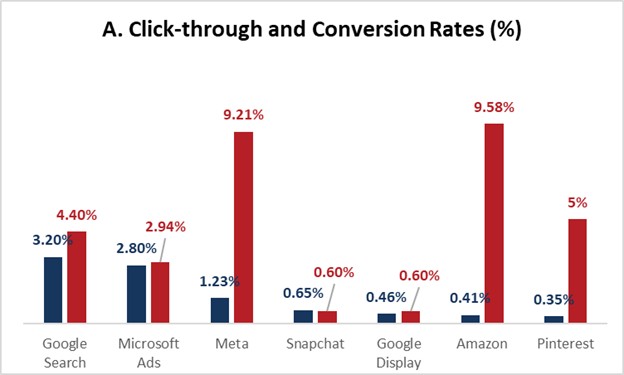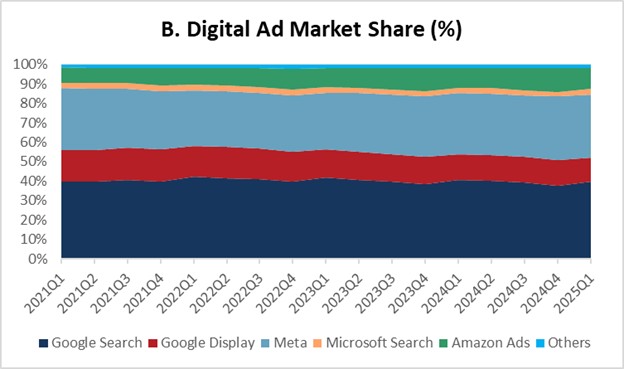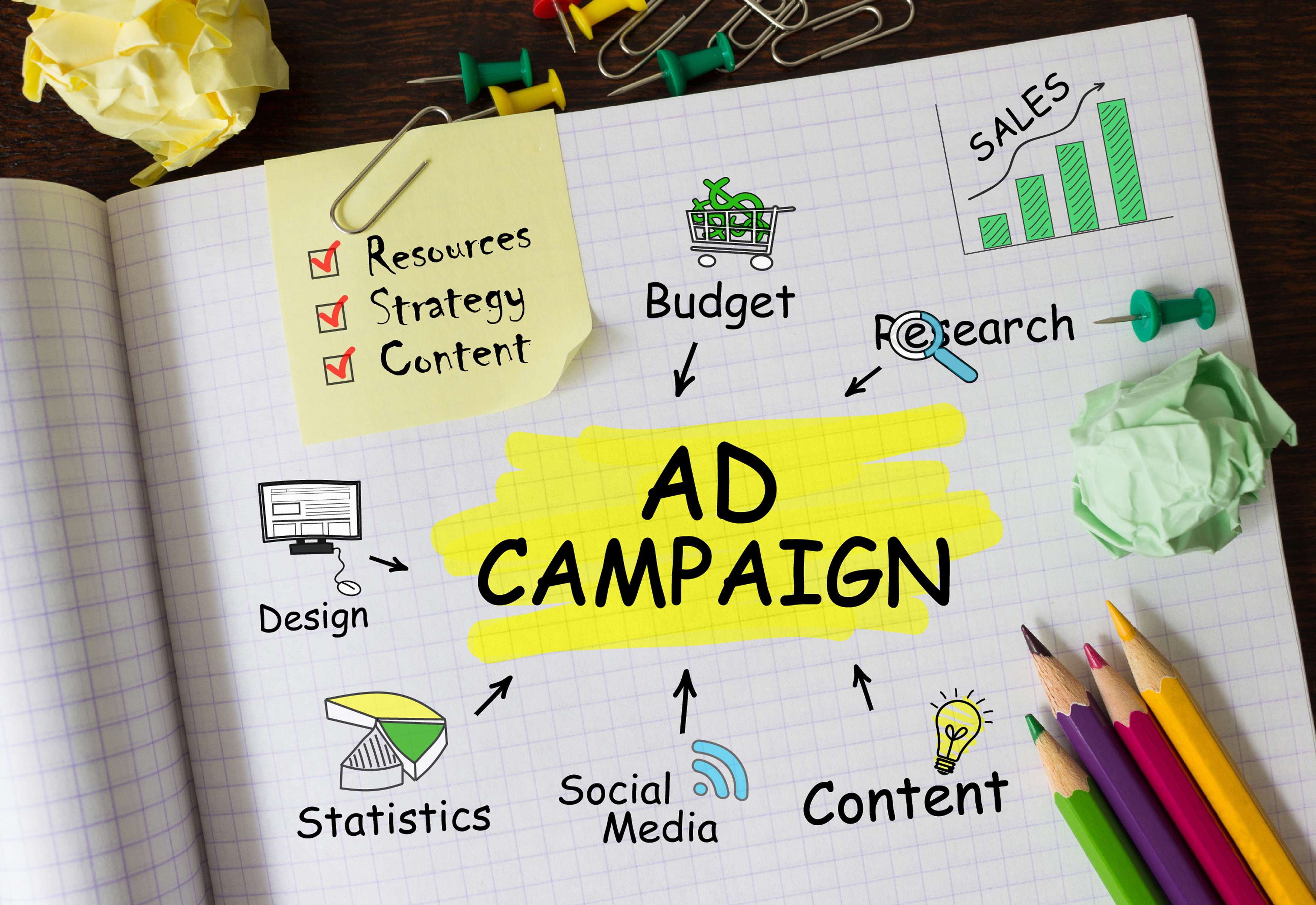The Changing Landscape of Digital Advertising
India’s digital advertising market in FY24 still resembles the early days of internet expansion—highly concentrated among the Big Three players: Alphabet, Meta, and Amazon, which collectively captured 91.2% of total ad spend (INR 60K crore). Globally, this figure stands at 94%, suggesting an enduring dominance of major ad-tech platforms across markets.
However, the underlying shares within this ecosystem are shifting, reflecting a fundamental change in online consumer behavior that may be altering the way advertisers allocate their budgets.
Assessing CTR and CVR: A Global Comparison
Click-through rates (CTR) and conversion rates (CVR) remain critical indicators of ad effectiveness. Given India’s similarity in digital consumption dynamics with other global markets, a multi-source analysis of CTR and CVR estimates provides a clearer understanding of where ad spend is flowing. (See Chart A)
Key Observations from Ad Market Share Shifts:
- The Relationship Between CTR, CVR, and Ad Effectiveness Conventional wisdom suggests that ad links placed within high-intent platforms yield both high CTR and high CVR—a trend observed in search-heavy ad platforms such as Google Search and Microsoft Ads.

Chart A: Search based channels have the highest Click Through Rate (CTR)
Source: ROC, Company Reports, Amazon Ad Store, Wordstream, Ad Badger, BeProfit, First Page Sage
Conversely, more passive ad environments (e.g., Google Display, Snapchat) tend to have lower CTRs, given the less direct intent-driven engagement from users.
Amazon and Meta: The Biggest Gainers in Market Share
Despite the expectation that high-intent search ads should dominate conversions, the largest growth in ad spend over the past four years has come from Amazon and Meta (primarily Instagram)—both of which demonstrate low CTR but high CVR. (Chart B)
Chart B: However, search based platforms have lost market share to discovery based platforms over the past four years
Source: ROC, Company Reports, Amazon Ad Store, Wordstream, Ad Badger, BeProfit, First Page Sage
Google has lost 3.6 percentage points of market share in ad spend since 2021.
Amazon captured 80% of this lost share.
In Q1 2025, one out of every six ad dollars went to Amazon—up from one out of every ten in Q1 2021.
This represents a significant shift in advertiser priorities, favoring platforms where purchases and conversions are deeply integrated into the user experience rather than those reliant on external search-driven traffic.
Implications for the Future of Digital Advertising
Has Online Behavior Shifted?
The traditional assumption—that high CTR drives high CVR—doesn’t fully explain Amazon and Meta’s rising dominance. Instead, consumer behavior appears to be evolving, impacting ad effectiveness in subtle but profound ways.
One emerging theory is that online retail is becoming more embedded into digital experiences, reducing reliance on direct search and making discovery-driven commerce the dominant mode.
The Rise of Point-of-Sale Advertising
If this shift continues, digital ad spend will likely:
- Move away from traditional search-based models.
- Favor discovery-driven channels, where users interact with brands organically.
- Expand in display advertising, where brand recall drives purchase intent rather than immediate click-through actions.
Advertisers may increasingly prioritize point-of-sale ad placements, where engagement occurs within purchasing ecosystems—whether through marketplaces like Amazon, content-driven platforms like Instagram, or even emerging AI-driven commerce experiences.
Final Takeaway
Digital advertising is evolving in response to changing user behavior. While search-based channels historically dominated ad spend, there is growing momentum toward discovery-led platforms, where the entire purchase journey is streamlined into a single ecosystem.
Should this trend accelerate, the next era of digital advertising may look very different—favoring embedded, intent-driven commerce experiences rather than outbound traffic-generation models.
We will continue to monitor how ad spend shifts across different verticals, particularly in India’s digital economy, where consumption dynamics are rapidly evolving.
Stay tuned for more insights on this topic.
